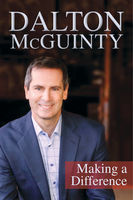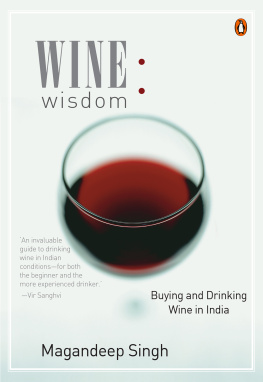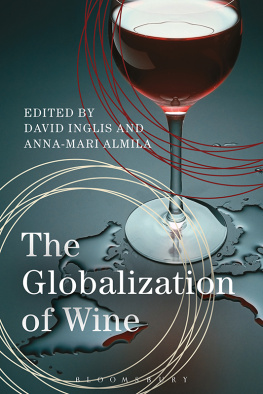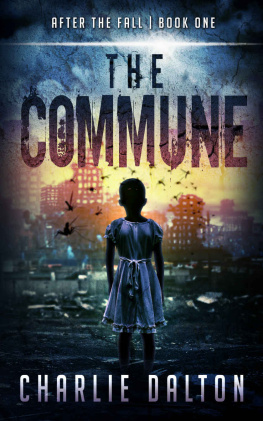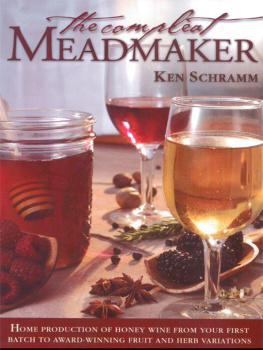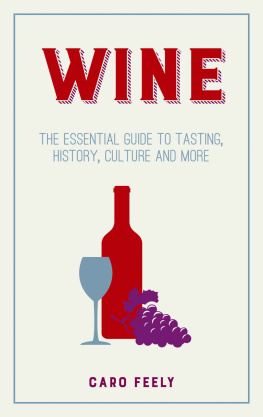David R. Dalton - The Chemistry of Wine: From Blossom to Beverage and Beyond
Here you can read online David R. Dalton - The Chemistry of Wine: From Blossom to Beverage and Beyond full text of the book (entire story) in english for free. Download pdf and epub, get meaning, cover and reviews about this ebook. year: 2017, publisher: Oxford University Press, genre: Science. Description of the work, (preface) as well as reviews are available. Best literature library LitArk.com created for fans of good reading and offers a wide selection of genres:
Romance novel
Science fiction
Adventure
Detective
Science
History
Home and family
Prose
Art
Politics
Computer
Non-fiction
Religion
Business
Children
Humor
Choose a favorite category and find really read worthwhile books. Enjoy immersion in the world of imagination, feel the emotions of the characters or learn something new for yourself, make an fascinating discovery.

- Book:The Chemistry of Wine: From Blossom to Beverage and Beyond
- Author:
- Publisher:Oxford University Press
- Genre:
- Year:2017
- Rating:5 / 5
- Favourites:Add to favourites
- Your mark:
- 100
- 1
- 2
- 3
- 4
- 5
The Chemistry of Wine: From Blossom to Beverage and Beyond: summary, description and annotation
We offer to read an annotation, description, summary or preface (depends on what the author of the book "The Chemistry of Wine: From Blossom to Beverage and Beyond" wrote himself). If you haven't found the necessary information about the book — write in the comments, we will try to find it.
The Chemistry of Wine: From Blossom to Beverage and Beyond — read online for free the complete book (whole text) full work
Below is the text of the book, divided by pages. System saving the place of the last page read, allows you to conveniently read the book "The Chemistry of Wine: From Blossom to Beverage and Beyond" online for free, without having to search again every time where you left off. Put a bookmark, and you can go to the page where you finished reading at any time.
Font size:
Interval:
Bookmark:
FROM BLOSSOM TO BEVERAGE... AND BEYOND
David R. Dalton


Oxford University Press is a department of the University of Oxford. It furthers the Universitys objective of excellence in research, scholarship, and education by publishing worldwide. Oxford is a registered trade mark of Oxford University Press in the UK and certain other countries.
Published in the United States of America by Oxford University Press
198 Madison Avenue, New York, NY 10016, United States of America.
Oxford University Press 2017
All rights reserved. No part of this publication may be reproduced, stored in a retrieval system, or transmitted, in any form or by any means, without the prior permission in writing of Oxford University Press, or as expressly permitted by law, by license, or under terms agreed with the appropriate reproduction rights organization. Inquiries concerning reproduction outside the scope of the above should be sent to the Rights Department, Oxford University Press, at the address above.
You must not circulate this work in any other form and you must impose this same condition on any acquirer.
Library of Congress Cataloging-in-Publication Data
Names: Dalton, David R., 1936 author.
Title: The chemistry of wine : from blossom to beverage... and beyond / David R. Dalton.
Description: New York, NY : Oxford University Press, [2017] | Includes bibliographical references and index.
Identifiers: LCCN 2017030132 | ISBN 9780190687199 | ISBN 9780190687212 (epub)
Subjects: LCSH: Wine and wine makingChemistry. | Viticulture.
Classification: LCC TP548 .D254 2017 | DDC 663/.2dc23
LC record available at https://lccn.loc.gov/2017030132
To Cecile
A Book of Verses underneath the Bough
A Jug of Wine, a Loaf of Breadand Thou
Beside me singing in the Wilderness
Oh, Wilderness were Paradise enow
XII Quatrain, Fourth (1879) and Fifth (1889) editions
Rubiyt of Omar Khayym
(translated by Edward Fitzgerald)
Fine Editions Press, New York, 1957, p 116
So, well go no more aroving
So late into the night
Though the heart be still as loving
And the moon be still as bright.
George Gordon 17881824

Edmund J. Sullivan, Windsor Press, 1938. This graphic is from the Wikimedia Commons and is in the public domain.
And much as Wine has playd the Infidel,
And robbd me of my Robe of HonourWell,
I wonder often what the Vintners buy
One half so precious as the stuff they sell.
XCV Quatrain, Fourth (1879) and Fifth (1889) editions
Rubiyt of Omar Khayym
(translated by Edward Fitzgerald)
Fine Editions Press, New York, 1957, p 137
Darwin was right to hedge his bets, but today we are pretty certain that all living creatures on this planet are descended from a single ancestor. The evidence... is that the genetic code is universal, all but identical across animals, plants, fungi, bacteria, archaea and viruses. The 64-word dictionary, by which the letter DNA words are translated into twenty amino acids and one punctuation mark, which means start reading here or stop reading here is the same 64-word dictionary wherever you look in the living kingdoms...
Dawkins, Richard The Greatest Show on Earth
Free Press, New York, 2009, pp 4089

Cabernet Harvest, 2012 courtesy G. Hamel, Hamel Family Ranch, Sonoma Valley, CA (photo by S. Duncan). Used with permission of George Hamel, Jr.

And the earth brought forth grass, herb yielding seed after its kind, and tree bearing fruit, wherein is the seed thereof, after its kind; and God saw that it was good.
And there was evening and there was morning, a third day.
APPENDICES
THAT THIS WORK came into being is largely due to the influence of Professor Robert J. Levis, Department of Chemistry, Temple University. Having invented and taught the initial offering of a General Education course in the Chemistry of Wine, Robert invited me to participate in the creation of the laboratory for the course and then, from time-to-time, replace him as lecturer while he was away.
I quickly discovered how difficult it was to talk about chemistry at the appropriate General Education level. Indeed, I was very uncomfortable and floundered when it was clear that the class members either ignored or believed everything I said. I was ignored when it was too complicated and believed when I made it too simple. And so, having tried to teach the whole course for a semester (inviting Professor Levis in to help) I began to listen when others of my colleagues, Eric Borguet and Robert Rarig, had a go at teaching the course. Despite their sterling efforts, I found myself more or less unhappy whatever was done. This work is an attempt to salve my conscience; it could be used in a chemistry course.
It is clear that my late wife, to whom this is dedicated, and my extended family suffered neglect while this work was in progress. I apologize to them.
My friends and colleagues at Temple University and other institutions where I have had the pleasure of spending time have been supportive beyond expectation, and I need to particularly thank my longtime laboratory coworker and friend Professor Linda M. Mascavage of Arcadia University for her suggestions and criticism.
The editorial staff at Oxford University Press has done more than could be expected. Indeed, in addition to much hand holding early on by Jeremy Lewis and his able coworker Anna Langley, I am grateful for the efforts of the group headed by Sasirekka Nijanthan and Janani Thiruvalluvar, the superb editorial work of Linda Mamassian who converted obscure to clear and the efforts of Beth Bauler to bring the work to you.
I take comfort from the poetic prose of Alexander Pope who, in his Essay on Criticism pointed out...
Whoever thinks a faultless Piece to see,
Thinks what neer was, nor is, nor eer shall be.
In evry Work regard the Writers End,
Since none can compass more than they Intend...
Despite efforts to correct errors and eventually repair the repairs, flaws for which I alone am responsible will be found. I apologize to you, reader, and ask that you let me know what needs fixing as your time and interest permits.
David R. Dalton
THIS IS NEITHER the book I intended to write nor the book I began to write.
Poets extol the burst of aroma when the bottle is opened, the wine poured, the flavor on the palate as it combines with the olfactory expression detected and the resulting glow realized. But what is the chemistry behind it? What are the compounds involved and how do they work their wonder?
What do we know?
Events in what can best be described as Analytical Chemistry as well as the work of the vintner, are critical to the production of the symphony of flavors found in the final bottled product.
Analytical chemistry can inform us about the chemical differences and similarities in the grape berry constituents with which we start and what is happening as the grape matures. Indeed, during maturation, we can begin to see how the constituents change in the grape as well as what transpires as it is exposed to fungi (such as one or more of the strains of wild yeast found in most vineyards) and bacteria that are always present. Compounds can be observed following the grapes crushing, both before and after the addition of a strain of
Font size:
Interval:
Bookmark:
Similar books «The Chemistry of Wine: From Blossom to Beverage and Beyond»
Look at similar books to The Chemistry of Wine: From Blossom to Beverage and Beyond. We have selected literature similar in name and meaning in the hope of providing readers with more options to find new, interesting, not yet read works.
Discussion, reviews of the book The Chemistry of Wine: From Blossom to Beverage and Beyond and just readers' own opinions. Leave your comments, write what you think about the work, its meaning or the main characters. Specify what exactly you liked and what you didn't like, and why you think so.

